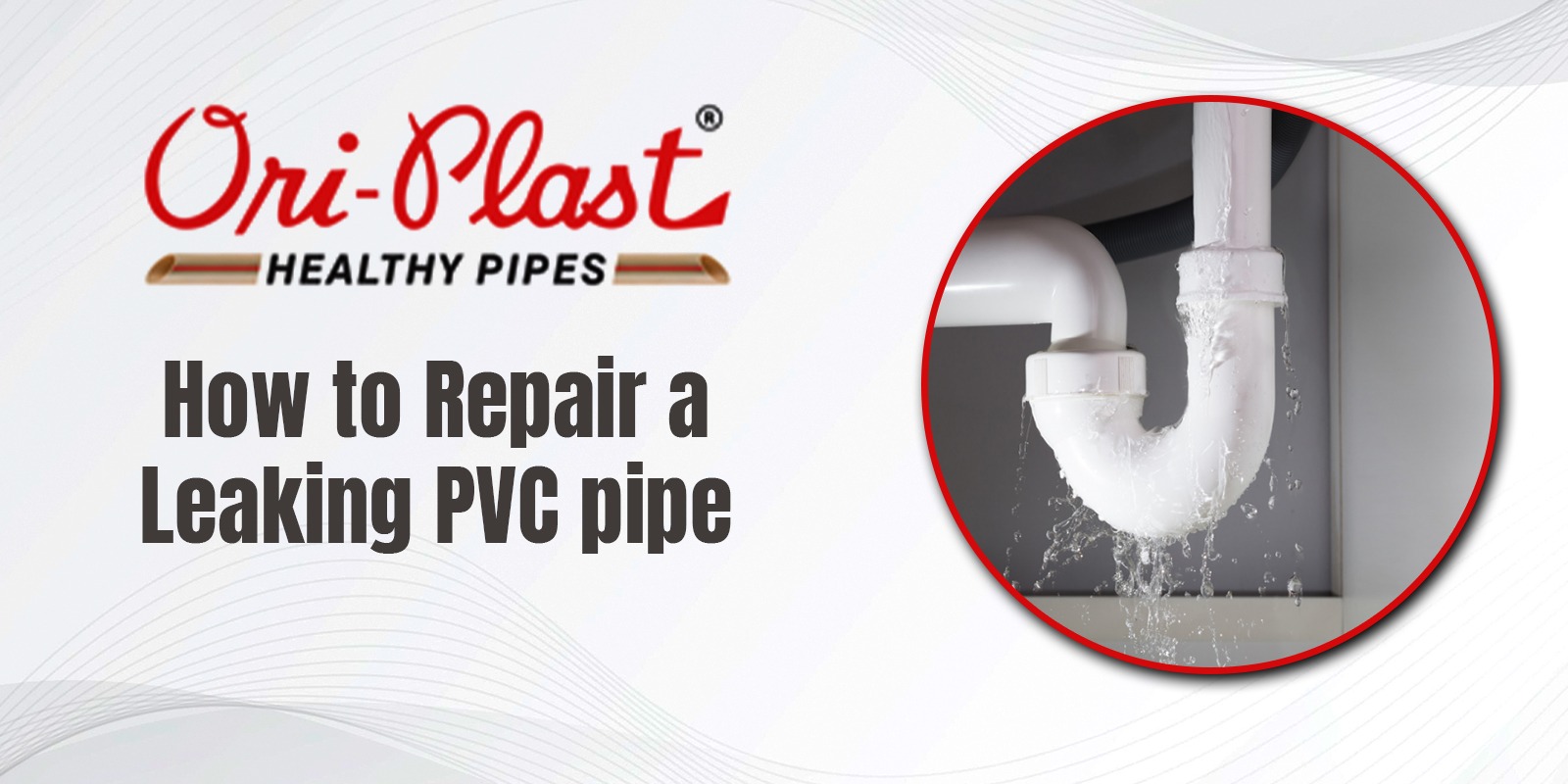PVC pipes are a popular choice for water supply lines and sewage systems because of their durability and low cost. However, like any plumbing system, they can develop leaks over time. If you notice water stains or wet spots on the walls, ceiling, or floor, or you hear a hissing sound, it could be a sign of a leaking PVC pipe. If left unaddressed, a small leak can lead to significant water damage and costly repairs. In this article, we will explain how to repair a leaking PVC pipe and prevent future leaks.
Repair a Leaking PVC Pipe in 5 easy steps
Turn Off the Water Supply
Before you start repairing the leaking PVC pipe, turn off the water supply to the affected area. You can shut off the main valve that controls the water supply to the house or the valve that controls the water flow to the leaking area. Make sure to release any pressure in the pipe by turning on the faucet and letting the water run until it stops.
Locate the Leak
Once you have turned off the water supply, locate the source of the leak. Depending on the location of the leak, you may need to remove drywall or other materials to access the pipe. If the leak is a small hole or crack, you can usually spot it by looking for water stains or wet spots. If the leak is a larger crack or a joint that has come apart, you may need to cut out the damaged section of the pipe.
Prepare the Pipe and Fittings
To repair a leaking PVC pipe, you will need to prepare the pipe and fittings. First, use a piece of sandpaper or a pipe-cleaning tool to clean the outside of the pipe and the inside of the fitting. Make sure to remove any dirt, grease, or debris that could prevent a tight seal. Then, use a hacksaw or a pipe cutter to cut out the damaged section of the pipe. Make sure to make a straight cut and leave a clean edge.
Install the Repair Coupling
The most common way to repair a leaking PVC pipe is to use a repair coupling. A repair coupling is a PVC fitting that has two ends and a middle section that can be removed. To install the repair coupling, follow these steps:
- Insert one end of the repair coupling onto the existing pipe.
- Insert the other end of the repair coupling onto the new piece of pipe.
- Slide the middle section of the repair coupling over the damaged section of the pipe.
- Tighten the metal clamps on each end of the repair coupling with a screwdriver or pliers.
Make sure to follow the manufacturer's instructions for the repair coupling and use the correct size for your pipe.
Test the Repair
After you have installed the repair coupling, turn the water supply back on and check for leaks. You can also turn on the faucet and let the water run for a few minutes to make sure that the repair has held. If you notice any leaks, turn off the water supply and try tightening the metal clamps. If the leak persists, you may need to remove the repair coupling and try again.
Conclusion
In conclusion, repairing a leaking PVC pipe is a task that requires careful attention and a systematic approach. It is important to identify the source of the leak, prepare the area properly, select the right tools and materials, and follow the correct steps for cutting, fitting, and gluing the PVC pipe. By following the tips and guidelines outlined in this article, you can successfully repair a leaking PVC pipe and avoid costly water damage, plumbing bills, and environmental problems.
Remember to always prioritize safety, wear protective gear, and work in a well-ventilated area. Don't hesitate to seek professional help if you encounter difficulties or uncertainties during the process. With patience, practice, and a positive attitude, you can become proficient in repairing PVC pipes and tackle more complex plumbing projects in the future.
Check out the wide range of PVC pipe collections from Oriplast Visit our Facebook Page Oriplast for more Information



